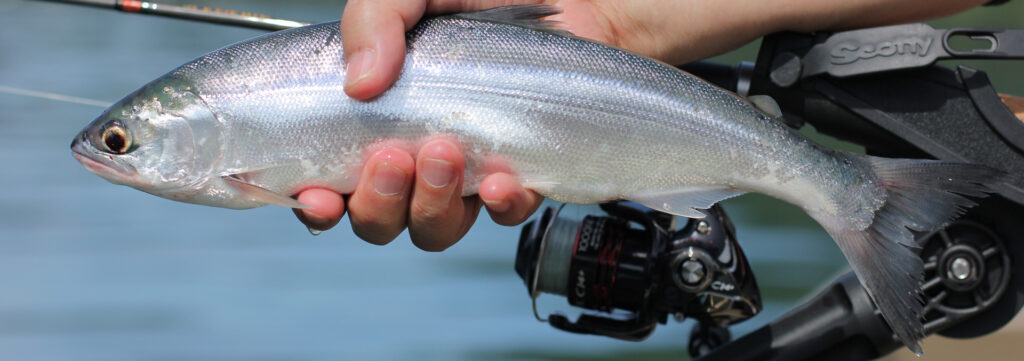One of the key goals of the provincial freshwater stocking program is to increase angler participation and satisfaction by ensuring thriving recreational fisheries. Developing new kokanee fisheries is one way the Freshwater Fisheries Society of BC, in partnership with the Province, is working to achieve this goal. Why kokanee? The reasons are many! For starters, kokanee taste great and are nutritious. They are an exciting fish to catch. They provide great family fisheries in summer when catch rates of other species decline due to high temperatures, and hot action in winter through the ice. Even if you don’t fish, kokanee deliver a colourful spawning spectacle in September and October each year.
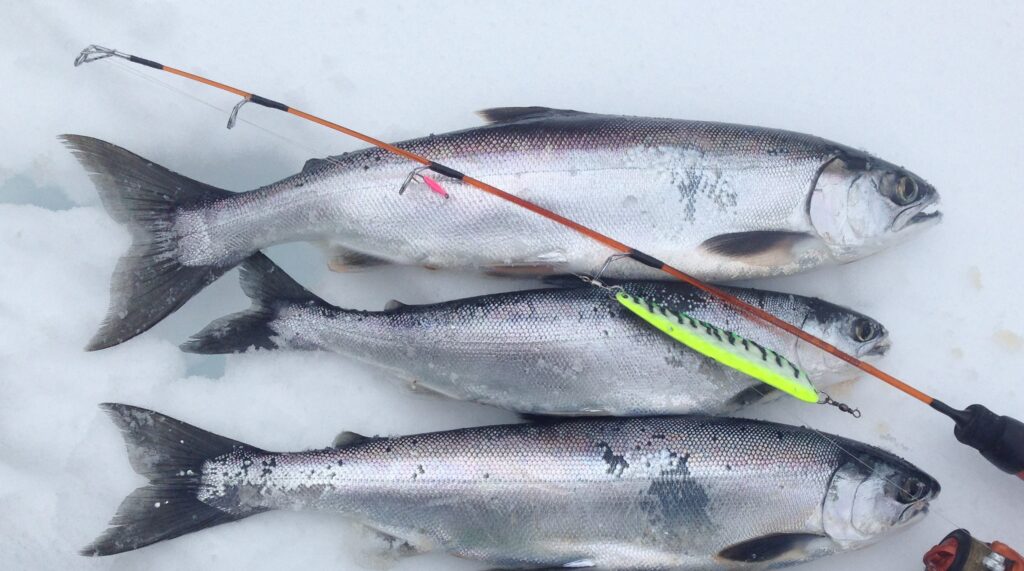
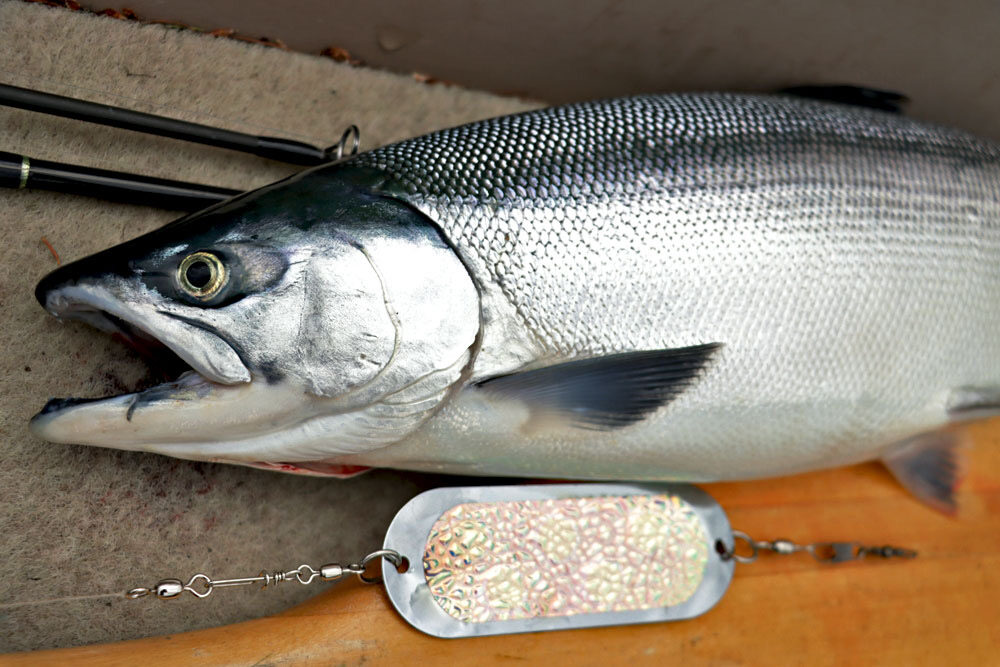
Kokanee, a freshwater sockeye salmon
Kokanee are the same species as sockeye salmon (Oncorhynchus nerka). Although sockeye migrate to the sea as juveniles and return to fresh water as adults to spawn, kokanee reside in fresh water all their lives. After glaciation in B.C., sockeye came to occupy most west-draining rivers and the Mackenzie River system. Kokanee have followed suit, and have similarly wide distributions. Kokanee occur naturally in lakes, often where sockeye no longer have access due to dams or natural barriers. They have evolved multiple times from different sockeye populations, and while the two varieties share spawning timing and habitat, they maintain distinct genetic differences. Kokanee have been introduced widely across North America to produce recreational and commercial fisheries.
History of the Kokanee Stocking Program in B.C.
In the early 2000s, 12 to 17 lakes in B.C. were regularly being stocked with kokanee to provide recreational fisheries. Most of these lakes were in the Central Interior of the province. As many of these lakes had little to no suitable habitat for spawning, they required annual stocking to maintain the fishery. In British Columbia, eggs were historically harvested at the spawning channel in Meadow Creek, but only after enough kokanee had reached the spawning grounds to provide natural reproduction for conservation and recreational fishing in Kootenay Lake.
In recent years, the Freshwater Fisheries Society and the Province have developed and maintained other sources for kokanee eggs to support the provincial stocking program. These include Norbury Creek (a tributary of the Bull River system), Hill Creek, the Columbia River at Fairmont, larger stocked lakes in the Interior (Deka, Sulphurous, Bridge, Tyee), and the Osilinka River (a tributary of the Williston system).
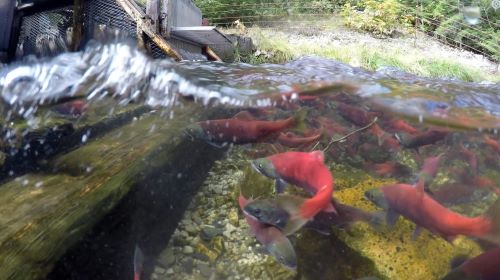
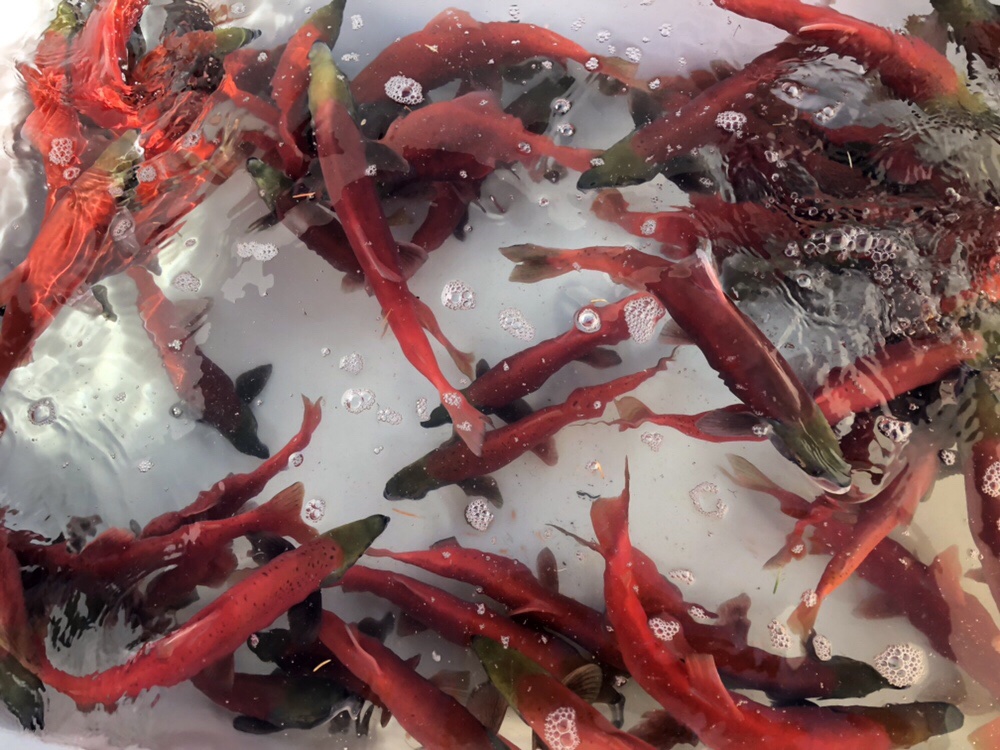
By developing new kokanee fisheries, we can create more opportunities to fish in other areas of the province, increase the diversity of existing ones, and make them more accessible to families and novice anglers. Most new kokanee fisheries have proven very popular. Fishing effort, spread throughout the year, has more than doubled on these lakes.
While we are excited about the prospect of developing new kokanee fisheries, we needed to proceed with some caution. When kokanee are first introduced into a new system, most fisheries biologists like to use non-reproductive (also called 3n, sterile, or triploid) or all-female triploid (AF3n) fish as opposed to reproductive fish (also called 2n or diploid). The Research and Development Section (REDS) of the Freshwater Fisheries Society of BC has been developing these special sterile stocks of kokanee over the last decade.
Why use sterile kokanee?
Kokanee, unlike rainbow trout, are able to shore spawn (i.e. spawn along the shore instead of in streams). If conditions are right they can produce too many offspring, which can reduce the size of the kokanee to the point where anglers lose interest; this is called stunting. If sterile fish are used, this diminishes the probability of stunting while still allowing the establishment of a new kokanee fishery.
Evaluating growth of sterile kokanee
We have evaluated the performance of triploid (3n or sterile) kokanee in small lakes over the last 10 years. Evaluations of 3n kokanee in Ten Mile Lake, a new system for kokanee at the time, have shown that sterile kokanee can provide good fisheries with fish achieving good average sizes. Most of the 3n kokanee in the creel surveys were aged two (28cm) to four (40cm) years. Sometimes older kokanee (>45cm) are caught, most bright sterile females. Reproductive (2n) kokanee go through the process of senescence where they develop gonads, turn red, develop a kype, and die soon after spawning. Sterile (3n) males still undergo these changes, try unsuccessfully to spawn, and die by age three. Sterile females, however, remain bright and can still continue to contribute to the fishery for another few years. Some 3n female kokanee can start the process of senescence, but not until age five or older. Once this happens, they can turn red and become less well-conditioned (slimmer), but do not produce ovaries with viable eggs. In a high-effort fishery such as Ten Mile Lake, very few stocked fish live beyond age five.
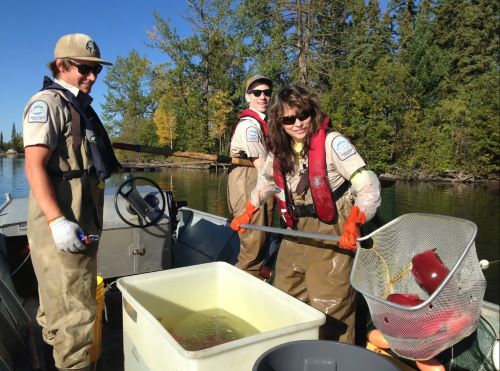
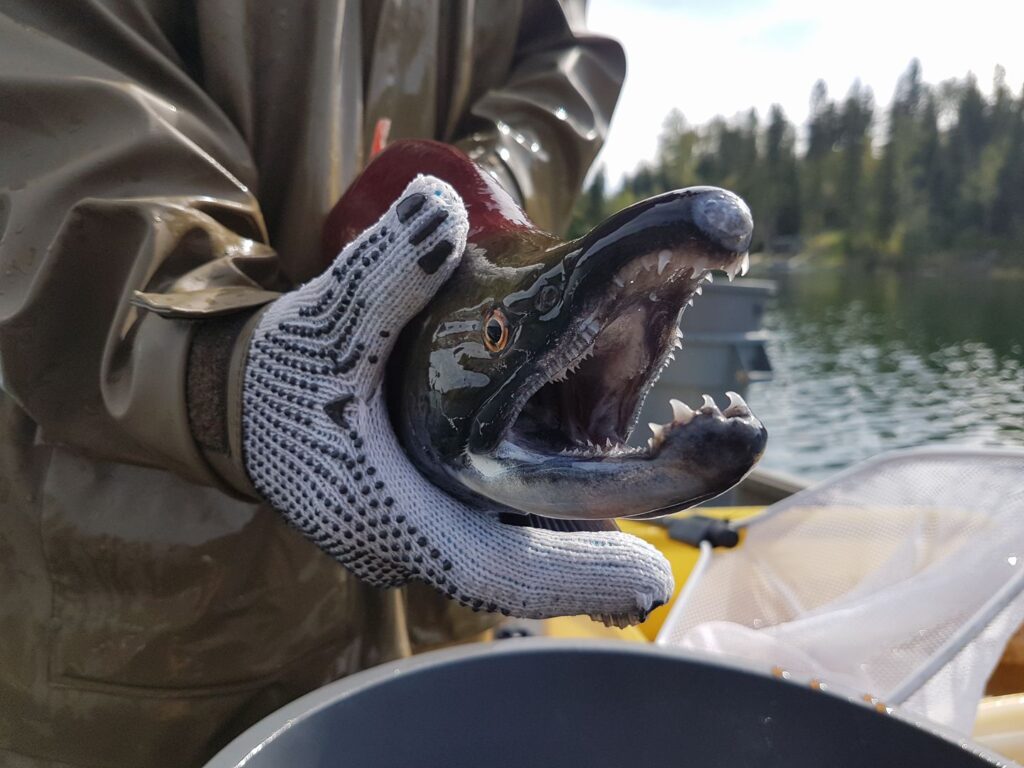
We’ve also made direct comparisons between reproductive (2n) and sterile (3n) kokanee by stocking approximately equal numbers of each type (differentially marked with a fin clip) into study lakes. We sample them using a standard gill net after they have spent one or more seasons in the lake. In general, if lake conditions are challenging (high temperatures, high pH levels, or lots of competition for food), 2n fish seem to survive and grow better in the first year than 3n fish. This means that more numerous and larger age 2 kokanee are available to anglers under these conditions if 2n fish are stocked.
The advantages of stocking sterile (or all‐female sterile) kokanee are not evident until after age two when the reproductive fish begin to mature and die off. By age three, 3n fish are just as big as 2n kokanee, and are more numerous. You would think that if 3n female kokanee lived longer that they would grow larger. It appears, however, that they do not continue growing at the same rate after age three, so there is no size advantage to stocking 3n fish.
Maturation schedules need to be considered when comparing 2n and 3n fish, and the fisheries they produce. Typically, after spending their first winter and second summer in a lake (referred to as age 1+), 71% of the 2n, and none of the 3n kokanee sampled, are maturing (i.e. going to spawn that fall and die). For kokanee captured at age 2+ or older, 100% of the 2n fish are mature, and 81% of the 3n fish are mature (mostly due to the male component of 3n kokanee that still turn red and die). However, 80% of the 3n females age 2+ or older are still immature (bright silver). This is one advantage to stocking all-female sterile kokanee (AF3n). This later maturation schedule of the sterile females is also why 3n and AF3n kokanee can still produce nice fisheries despite not surviving and growing quite as well as 2n kokanee in challenging environments the first season.
Another reason to stock sterile kokanee is to reduce the possibility of hatchery fish leaving a system and interfering with other native wild fish. For this and other reasons, we continue to produce and develop sterile and all-female sterile kokanee. This blog post discusses the benefits of using triploid and all-female triploid fish, and provides information on how we produce them.
Expanding opportunities for kokanee
Fisheries managers are continually assessing which kokanee stocks are best suited for stocking into particular lakes. Stocking can be switched from reproductive to sterile if a conservation concern becomes an issue. Conversely, stocking can be switched from sterile to reproductive kokanee if, after many years of stocking sterile fish, they determine that there is a low probability of stunting from a combination of low shore-spawning options and high enough angler effort to reduce numbers. When choosing which of the special stocks to use for developing and maintaining kokanee fisheries, the provincial biologists try to balance the ecological risk, the effects of angling effort, and angler satisfaction. Either way, good fisheries are produced using both reproductive and sterile kokanee.
Through the development of special kokanee stocks as a management tool for recreational fisheries in the province, the Society hopes to improve the fishing experience for all anglers, increase participation among novice and lapsed anglers, and at the same time address conservation concerns for wild fish populations. With sterile stocks, approximately eight new kokanee fisheries were developed by 2010. And with the development of all-female sterile stocks over the last few years, an additional 22 fisheries have been or are being developed. Hopefully these new stocks will give more people more opportunity to angle for these tasty fish closer to home.
Find a list of lakes stocked with kokanee on our Stocking Report page.
Author: Theresa Godin, Freshwater Fisheries Society of BC
Original publish date: August 21, 2019
